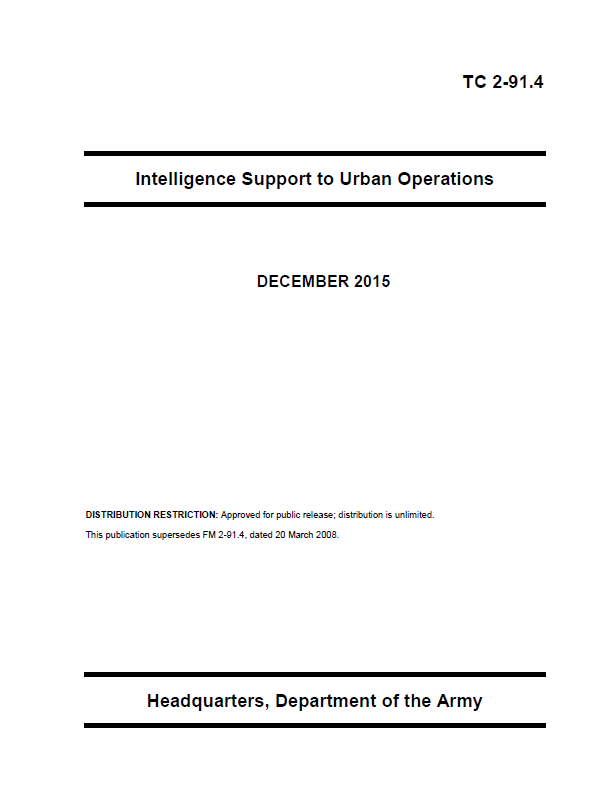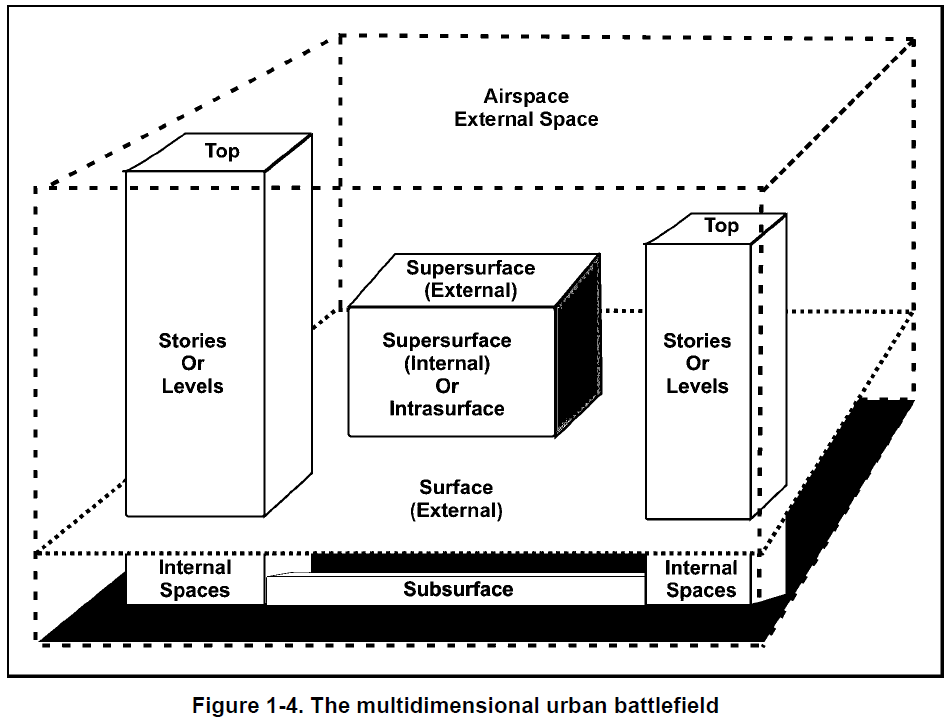TC 2-91.4 provides intelligence professionals a basic framework within which to focus on providing commanders with effective intelligence support for operations in the urban environment. This manual incorporates intelligence and operational doctrine and terminology from FM 3-06 and ATTP 3-06.11.
The principal audience for TC 2-91.4 is intelligence staffs and Soldiers of units conducting intelligence support to operations in the urban environment. It can also be used by commanders, staffs, and intelligence personnel at all echelons.
URBAN AREAS AND MODERN OPERATIONS
With the continuing growth in the world’s urban areas and increasing population concentrations in urban areas, the probability that Army forces will conduct operations in urban environments is ever more likely. As urbanization has changed the demographic landscape, potential enemies recognize the inherent danger and complexity of this environment to the attacker. Some may view it as their best chance to negate the technological and firepower advantages of modernized opponents. Given the global population trends and the likely strategies and tactics of future threats, Army forces will likely conduct operations in, around, and over urban areas—not as a matter of fate, but as a deliberate choice linked to national security objectives and strategy. Stability operations––where keeping the social structure, economic structure, and political support institutions intact and functioning or having to almost simultaneously provide the services associated with those structures and institutions is the primary mission––may dominate urban operations. This requires specific and timely intelligence support, placing a tremendous demand on the intelligence warfighting functions for operations, short-term planning, and long-term planning.
Providing intelligence support to operations in the complex urban environment can be quite challenging. It may at first seem overwhelming. The amount of detail required for operations in urban environments, along with the large amounts of varied information required to provide intelligence support to these operations, can be daunting. Intelligence professionals must be flexible and adaptive in applying doctrine (including tactics, techniques, and procedures) based on the mission variables: mission, enemy, terrain and weather, troops and support available, time available, and civil considerations (METT-TC).
As with operations in any environment, a key to providing good intelligence support in the urban environment lies in identifying and focusing on the critical information required for each specific mission. The complexity of the urban environment requires focused intelligence. A comprehensive framework must be established to support the commander’s requirements while managing the vast amount of information and intelligence required for urban operations. By addressing the issues and considerations listed in this manual, the commander, G-2 or S-2, and intelligence analyst will be able to address most of the critical aspects of the urban environment and identify both the gaps in the intelligence collection effort and those systems and procedures that may answer them. This will assist the commander in correctly identifying enemy actions so that Army forces can focus on the enemy and seize the initiative while maintaining an understanding of the overall situation.
FM 3-06 and ATTP 3-06.11 provide supporting material relevant to this manual.
…


